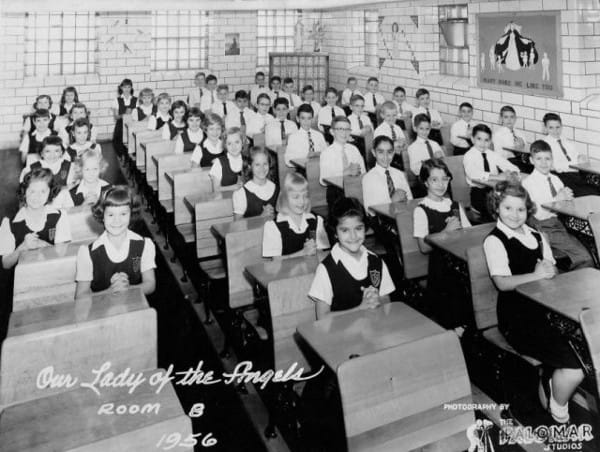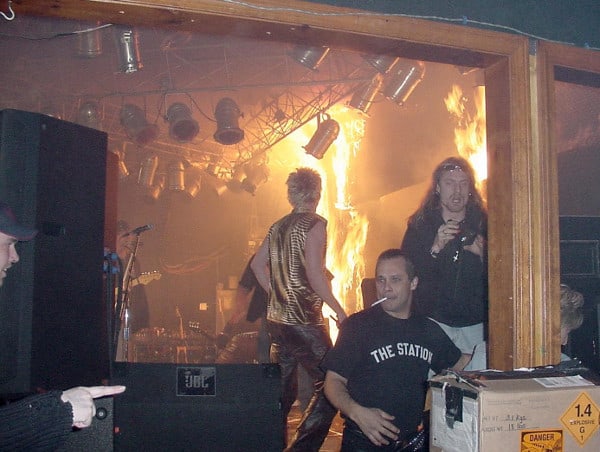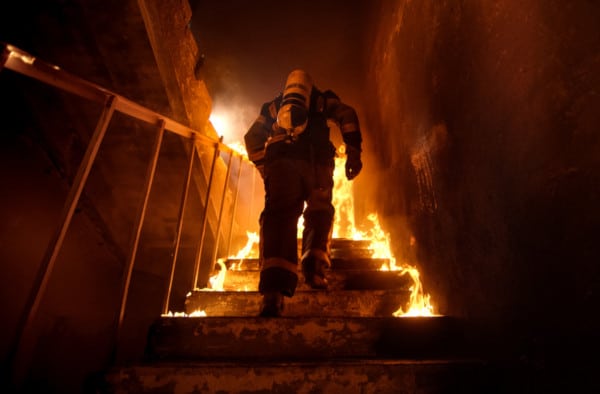New regulations drastically improved safety at schools and public assembly occupancies
When it comes to fire safety, human behavior is the biggest “X factor.” The robust protections built by fire and building codes are only as strong as the people who enforce and follow them.
It shouldn’t take a catastrophe to inspire people to take fire codes seriously—or for property owners to realize their weighty responsibility to keep people who enter their buildings safe. Horrific tragedies prove what can go terribly wrong when exits aren’t abundant and easily accessible, when exit doors swing inward, or when automatic fire sprinklers aren’t present.
But time leads to complacency, and the lessons learned from devastating blazes can be overshadowed by loud complaints that regulations are too restrictive, too expensive to implement, or unrealistic about the havoc that can be wrought.
In the first installment of our series on lessons learned from the deadliest fires in U.S. history, we examined the Iroquois Theater and Triangle Shirtwaist fires—and how they shaped modern requirements for fire sprinklers, better egress routes, alarm and detection systems, reducing the flammability of interior finishes, and other critical protections. In this blog, we recall the tragedies of the Our Lady of the Angels School Fire and The Station Nightclub Fire—and the sweeping changes they inspired to fire codes that make our environments safer.
Our Lady of the Angels School Fire: Chicago, 1958
Built in 1910, Our Lady of the Angels (OLA) was a two-story Catholic school in Chicago that taught classes for 1,600 children in kindergarten through eighth grade. The tragic death of 92 students and three nuns made it one of the deadliest fires in U.S. history—and led to massive overhauls of fire codes and higher standards for building safety at schools.
What went wrong
Since it was a parochial school instead of a public school, OLA wasn’t legally obligated to retrofit its building to comply with 1958 fire codes. It had no sprinkler system or smoke detectors. The two fire alarms weren’t connected to the local fire station and neither was located in the part of the school where the fire started. Fire extinguishers were stored in wall wells seven feet above the floor that most adults couldn’t reach.
The school’s interior was almost entirely made of combustibles—everything from the stairs to the floors to the walls were constructed of wood. The floors had been recoated many times with flammable petroleum-based waxes. The roof wasn’t vented and had been repeatedly sealed with tar paper, causing it to burn faster. Fire doors only protected part of the second floor—and they were propped open to enable students to easily pass during the school day. The other staircases were open, with nothing to hinder the spread of the fire.
About a half-hour or so before school was set to dismiss on Dec. 1, 1958, a barrel of oily rags started smoldering in the school’s basement. The cause was never determined, but many later suspected arson by a student.
A heavy fire door did prevent flames from infiltrating the first floor. But the open staircase design on the second floor enabled the fire to quickly spread along its corridors and into the attic. Students tasked with hauling wastebaskets to the basement saw the smoke and notified their teacher. She told another teacher, who spent a few minutes searching for the school’s principal before they decided to lead their students to the nearby parish.
At that point, smoke was already at head level in the second-floor corridor. The teachers tried to activate the fire alarm as they escaped, but it failed to sound. After their classes were settled into the church, one of the teachers returned to pull the fire alarm again. First-floor classrooms exited calmly, thinking it was a fire drill.
The school’s janitor noticed smoke and ran to the parish house to tell the housekeeper to call the fire department. By the time she did, 17 minutes had elapsed since the fire was spotted.

On the second floor, the situation quickly turned dire. By the time those classes realized there was a fire, the corridor was almost impassable and exits rehearsed during fire drills were useless. The heat exploded glass transoms over classroom doors, allowing hot gases, flames, and thick, black smoke to creep into the rooms.
Some students raced down the school’s single fire escape, but suffocating smoke and superheated gases prevented most from reaching it. Most of the children gathered around the windows with their teachers, gasping for air.
By the time firefighters started rescue attempts, the fire had raged for at least 30 minutes and was out of control. Children jumped out windows 25 feet above the ground as their horrified parents—who had raced to the school after seeing the smoke—watched helplessly. Many others died in the fire.
Watch this video to learn more about the Our Lady of the Angels school fire. Warning: images are graphic and disturbing:
Why schools are safer after the Our Lady of the Angels fire
The Our Lady of the Angels School Fire sparked sweeping fire safety reforms at schools and the new rules applied to every type—both public and private. Almost 17,000 schools nationwide were ticketed and forced to add protections; some were deemed so dangerous that they were shuttered until they brought themselves up to code.
NFPA and the International Code Council (ICC), which creates the model building and fire codes adopted in most U.S. jurisdictions, moved quickly to address inadequacies in fire protection in educational facilities. Some of the many changes included fire alarm switches installed throughout schools, instead of in a single location like OLA. Fire drills are now mandated, and all school fire alarms must be wired directly to a fire station.
New school buildings must be constructed of materials that are “fire resistant,” such as non-flammable interior wall and ceiling finishes. Major hallways must be at least partially enclosed so fire doors can halt the spread of fire. Any vertical opening such as a stairway must be enclosed with fire-resistant doors. And every classroom—new or old—must maintain at least 20 square feet per occupant to avoid overcrowding that makes escape difficult during a fire, although different numbers are still permitted for some older schools.
The Our Lady of the Angels school fire inspired extensive testing by the Los Angeles Fire Department (LAFD), which concluded that complete automatic sprinkler protection offered students the best chance of escape from multistory, open-stairway school buildings like OLA during a fire. It’s widely accepted that automatic fire sprinklers would likely have either extinguished the Our Lady of the Angels school fire when it started or greatly reduced its intensity.
But even so, for many years after the OLA tragedy made it one of the deadliest fires in U.S. history, there remained few requirements for the installation of fire sprinkler protection in educational facilities. In the early 1990s, the major model building and fire codes finally introduced mandates for automatic sprinkler protection in K-12 educational buildings larger than 12,000 square feet.
Since then, many local jurisdictions have slashed that threshold to zero, mandating automatic sprinklers in educational buildings of any size. In 2018, the model building and fire codes revised their sprinkler standards again, requiring any area in a school that exceeds a 300-person occupant load and any floor that doesn’t contain the exit discharge to have fire sprinklers.
A little more than a year after the Our Lady of the Angels school fire, NFPA sampled more than 2,000 fire departments to analyze whether school safety had improved. Nearly every community had implemented new fire safety procedures, including more frequent and better exit drills, tighter control of waste disposal, regular fire department inspections, and proper storage of combustible supplies.
Do all these regulations make schools safer? Consider these numbers: As recently as the period between 1980 and 1984, educational facilities (including colleges and universities) reported an annual average of 15,000 fires, 233 injuries, and $235 million in property damage. Between 2007 and 2011, the average annual number of fires at schools had dropped to 4,760, the average number of injuries per year was 74, and the average annual property loss was $77 million.
The Station Nightclub Fire: West Warwick, RI, 2003
Unfortunately, tragic fires due to human carelessness and inadequate laws aren’t relegated to days long ago. In 2003, The Station was a Rhode Island nightclub known for heavy metal music. On Feb. 20, the headliner was Great White, a metal band made famous by a Top 5 hit in 1989: “Once Bitten, Twice Shy.” In an ironic twist of fate, a news team was onsite, filming a story on nightclub safety.
What went wrong
More than 460 fans had crowded into the wooden, single-story, 6,200-square-foot nightclub to enjoy the Thursday night show. Just moments after 11 p.m., Great White stormed onto the stage. Their high-energy opening number was accompanied by three different “gerbs,” or pyrotechnic canisters that release a controlled fountain of sparks. Reportedly, their manager had failed to secure a pyrotechnics permit.
After multiple complaints from neighbors about noise, the owners of The Station had lined the stage with foam plastic soundproofing material. Unfortunately, it was highly flammable—and sparks from the pyrotechnic display instantly ignited the walls and ceiling around the stage.
Just seven minutes after coming onstage, Great White abandoned its set and lead singer Jack Russell warned the crowd, “This ain’t good.” The band dashed off stage just as the club’s fire alarm started blasting. Even so, precious seconds ticked by as most of the audience remained in place, thinking their actions were part of the show. For many, the misunderstanding proved fatal.

Chaos erupted when black smoke started billowing throughout the club, limiting visibility. The fire raced across the ceiling and over the dance floor toward the front doors.
The design of the front entrance corridor contributed to the loss of life, forcing concert-goers to push through an intermediate door that opened into a small foyer before finally reaching the main doors that led outside.
The cramped foyer was reportedly designed to prevent people from entering the club without a ticket, but it proved disastrous when the large, panicked crowd clogged it in a desperate attempt to escape the blaze. People stampeded into the area through entrances from the bar and club. In the panic to get out, many fell and were trampled. Falling patrons jammed the main exit, trapping the people behind them inside.
In the confusion, others fled blindly, finding themselves trapped in places like bathrooms with no means of escape. Three other exits were open and marked with lit signs in other parts of the club, but most people never realized they were there. An exit near the stage was quickly eliminated as the fire spread around the door, preventing escape.
Fire quickly ravaged the nightclub’s wooden structure, which had been grandfathered out of new codes requiring ceiling fire sprinklers because it was built before 1976. It only took four minutes for the unprotected building to be engulfed in flames.
By the time it was extinguished, the Station Nightclub fire had earned an unwanted place as one of the deadliest fires in U.S. history. It is the fourth-deadliest nightclub fire in the U.S., having claimed 100 lives and injuring more than 200 people.
Why public assembly occupancies are safer after the Station Nightclub fire
Once again, out of a terrible tragedy came sweeping changes to fire and life safety codes governing public assembly occupancies. Fire officials quickly concluded that a sprinkler system would have most likely spared many lives. The previous grandfather clause was lifted and all public facilities over a certain capacity were forced to install automatic sprinkler systems. Regulations regarding pyrotechnic displays were also tightened and strictly enforced.
NFPA reacted quickly to the tragedy. Three weeks after the Station Nightclub fire, NFPA sponsored a public forum and special meeting of the Technical Committee on Assembly Occupancies in Boston.
Fire officials and family and friends of people who had perished in the blaze delivered emotional testimonies, and a follow-up meeting was scheduled at NFPA headquarters. Terrifying footage from the news team that had been onsite revealed exactly how events unfolded during the fire.
Based on input from members of the Technical Committee and fire service professionals, NFPA officials raced to put together a number of Tentative Interim Amendments (TIAs) to relevant codes.
By August, NFPA’s Standards Council had reviewed and issued TIAs for NFPA 1: Fire Code, NFPA 101: Life Safety Code, and NFPA 5000: Building Construction and Safety Code. Here’s an overview of the changes:
- Property owners must install fire sprinklers in new nightclubs and similar assembly occupancies regardless of occupant load, and in existing facilities that accommodate more than 100.
- Building owners must frequently inspect exits to ensure they are free of obstructions and maintain records of every inspection.
- At least one trained crowd manager must be onsite for any gathering of more than 50 people, with the sole exception of religious services. For gatherings of more than 250 people, an additional crowd manager is required for every 250 people.
- Festival seating is prohibited for crowds of more than 250, unless the authority having jurisdiction (AHJ) approves a life safety evaluation that finds no danger in allowing it. Festival seating is a type of audience accommodation where there is no seating other than a floor or ground surface.
The TIAs were incorporated into the 2006 editions of NFPA 1, 101, and 5000. After much research and debate, the Station nightclub fire also prompted the 2018 edition of ICC’s International Fire Code (IFC) to demand retrofitting of existing bars, nightclubs, and restaurants with automatic sprinklers if the fire area where alcohol is consumed holds more than 300 occupants.
The National Institute of Standards and Technology (NIST) also launched an investigation into the tragic nightclub fire. It recommended specific improvements to building standards, codes, and practices to improve the structural fire safety of buildings and evacuation procedures. The NIST recommendations included restricting the use of flammable foam plastic materials, prohibiting pyrotechnic displays in enclosed nightclubs without sprinkler systems, strengthening the enforcement power of local fire marshals, and echoing the NFPA’s sprinkler requirements.
NIST continues to work with the fire protection industry and government officials to ensure these recommendations are adopted. For instance, NIST has teamed with UL (formerly Underwriter Laboratories) and ASTM (formerly known as the American Society for Testing and Materials) to conduct research needed to support additional changes to building and code standards based on its findings after The Station Nightclub fire.
Watch this video for a survivor’s account of The Station fire and why he believes fire sprinklers could have averted the tragedy. Warning: This video contains images from the fire and may be disturbing:
People, fire codes, and technology can prevent future tragedies
Today’s fire safety standards reflect painful lessons learned from the deadliest fires in U.S. history. And the key to preventing future tragedies is ensuring that the codes that reflect generations of fire research and experience are respected and enforced.
If you are looking to buy fire protection equipment, browse our selection of commercial and residential sprinkler heads, installation tools, fire extinguishers, heavy-duty head guards that protect sprinklers from accidental damage or vandalism, and much more.
Questions about QRFS products or need a brand or item that’s not online? Just call us at +1 (888) 361-6662 or email support@qrfs.com.
This blog was originally posted at blog.qrfs.com. Check us out at Facebook.com/QuickResponseFireSupply or on Twitter @QuickResponseFS.



On the OLA fire-
The barrel was actually full of paper. There were rolls of asphalt roofing material also being stored in the same area, which accelerated the fire. The stairwell acted as a chimney, which also accelerated the fire. The fire actually traveled in the suspended ceiling above the student’s heads in some of the rooms, and the survivors reported that the glass light globes were exploding right before the fire broke through the ceiling. In one 4th grade room, the fire was crawling over the ceiling before it flashed over.
What hindered the response was the fire department went to the wrong address first, to the actual church instead of the school.
The original building was remodeled in 1947 if I recall correctly, and it was grandfathered in terms of fire safety protocols. The ironic thing was that they had been doing fire evacuation drills the week before Thanksgiving break.